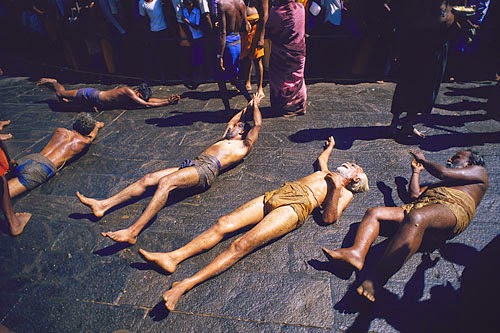Makara Jyothi 2025: A Divine Journey to Sabarimala
The Sabarimala Makaravilakku Festival is an extraordinary spiritual event celebrated with immense devotion at the Sabarimala Ayyappa Temple in Kerala, India. Scheduled for January 14, 2025, this sacred occasion marks the sighting of the Makara Jyothi, a celestial light revered as a divine blessing by millions of pilgrims.
What is Makara Jyothi?
Makara Jyothi, translated as the "Light of Capricorn," is a celestial event observed during Makara Sankranti, signifying the Sun’s transition into Makaram Rasi (Capricorn). The phenomenon is deeply spiritual and signifies the culmination of the 41-day Mandala Pooja season.
Devotees eagerly await the appearance of the Makarajyothi Anduthram star in the evening sky above Ponnambalamedu, accompanied by the sacred Thiruvaabharanam procession adorning Lord Ayyappa Swamy.
Legends and Mythology Behind Makara Jyothi
Makara Jyothi is surrounded by divine tales that amplify its spiritual significance:
The Encounter of Lord Rama and Sabari:
It is believed that Lord Rama met Sabari, a devoted ascetic, at Sabarimala. After receiving her offerings, Lord Rama witnessed the penance of Lord Dharmasasta (Sasta), marking this location as sacred.The Aarathi of the Devas:
According to tradition, the Makara Jyothi symbolizes the aarathi (lamp-lighting ceremony) performed by celestial beings to honor Lord Manikantan, an incarnation of Sasta, as he revealed his divine form.
Sacred Rituals on Makaravilakku Day
- Makarasamkramam: This celestial transition of the Sun into Capricorn is marked with special prayers at the Sabarimala Temple.
- Thiruvaabharanam Procession: The divine ornaments, carried from the Pandalam Palace, are ceremoniously placed on the deity of Lord Ayyappa.
- Deeparadhana: At dusk, a Brahminy kite hovering over the temple signals the start of the lamp-lighting ritual, after which the Makara Jyothi appears in the sky.
- Makara Jyothi Darshan: Devotees bow in reverence as they witness this divine light, considered a blessing from Lord Ayyappa.
The Pilgrimage: A Journey of Faith
Pilgrims undergo a 41-day vratham (austerity) involving strict discipline and devotion. They wear black or blue attire, walk barefoot, and carry the Irumudi Kettu (sacred bundle) as they navigate forest paths and ascend the Pathinettampadi (18 sacred steps).
Chanting “Swamiye Saranam Ayyappa,” they immerse themselves in an unparalleled spiritual journey, culminating in the darshan of Lord Ayyappa and the sighting of Makara Jyothi.
Makara Jyothi 2025 Timings
- Makarasamkramam: 6:44 PM IST
- Deeparadhana and Makara Jyothi Darshan: Shortly after.
The Spiritual Significance of Makara Jyothi
For devotees, Makara Jyothi is more than a celestial event—it’s a moment of divine connection. Witnessing the light is believed to bring prosperity, spiritual growth, and blessings from Lord Ayyappa.
The festival is also a celebration of faith, perseverance, and the unity of devotees from diverse backgrounds, united by their devotion to Lord Ayyappa.
Keywords:
Makara Jyothi 2025, Sabarimala Makaravilakku, Makara Sankranti rituals, Makara Jyothi significance, Thiruvaabharanam procession, Mandala Pooja, Pathinettampadi steps, Sabarimala pilgrimage, Lord Ayyappa Swamy, Makara Samkramam







